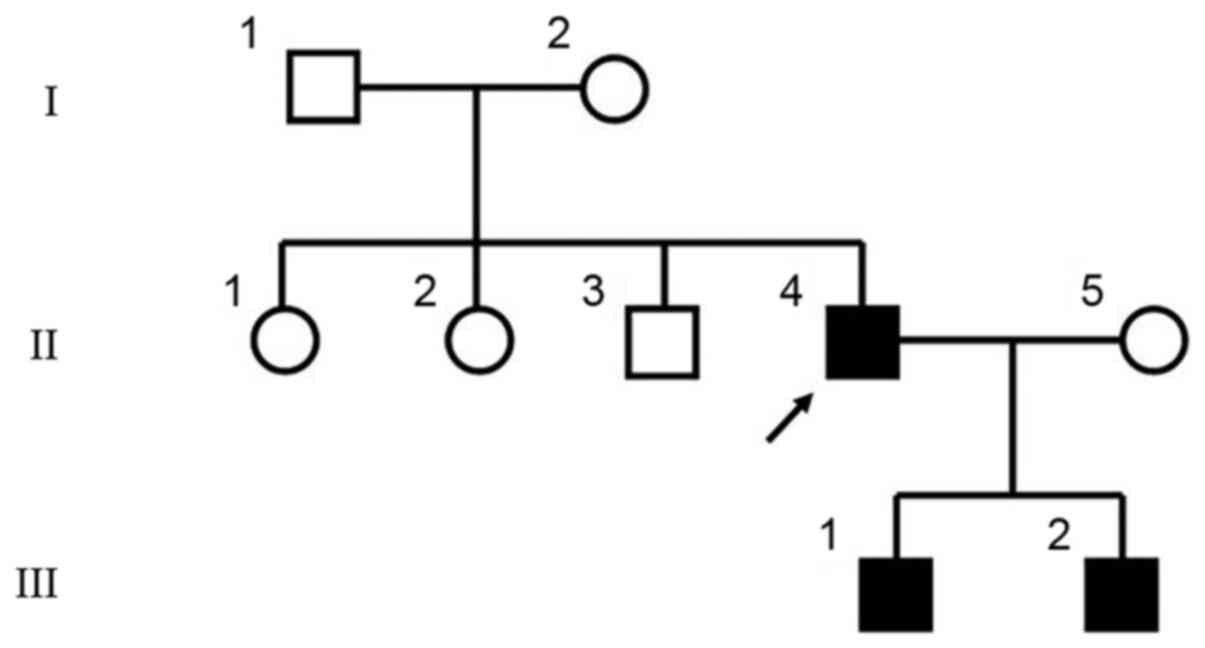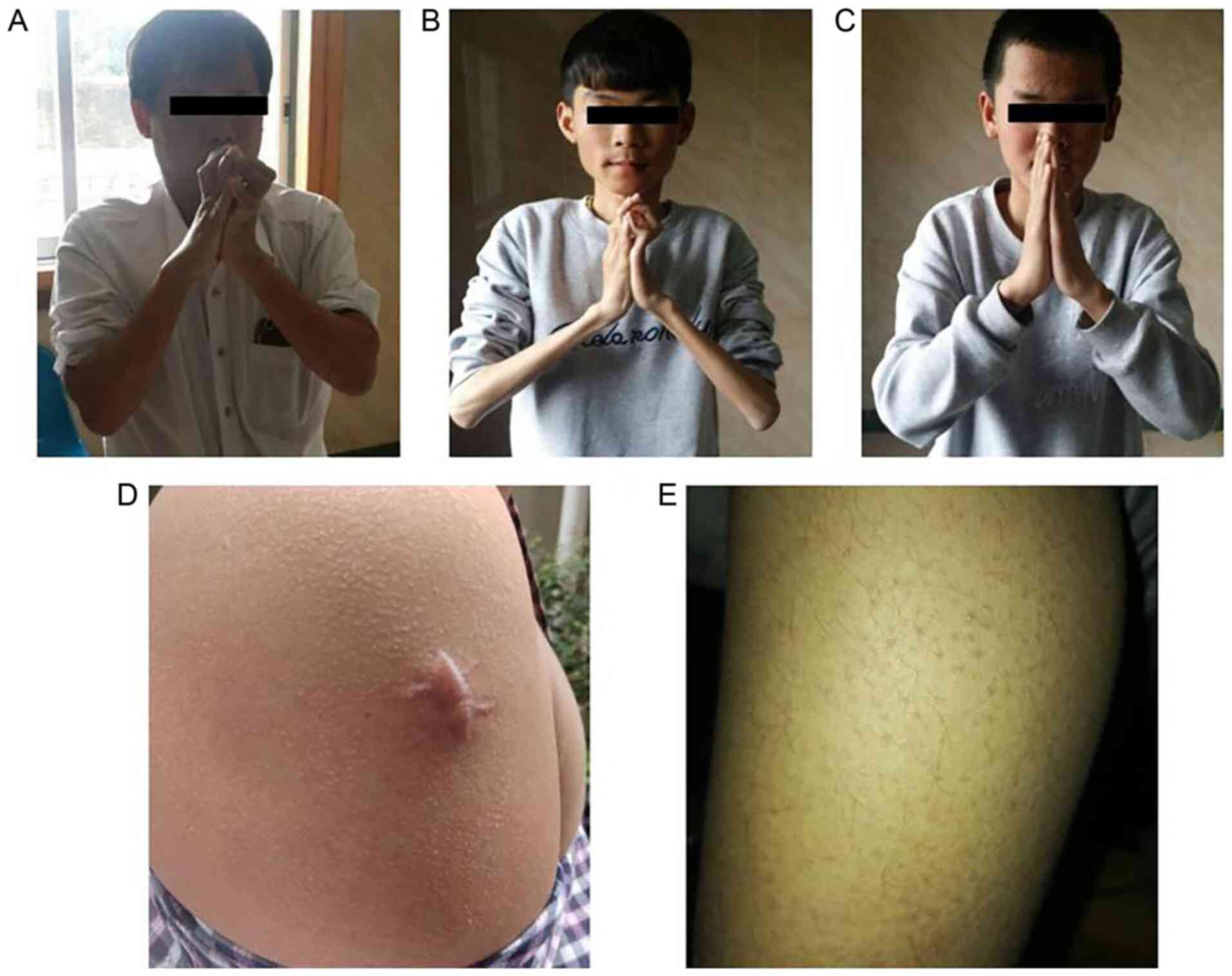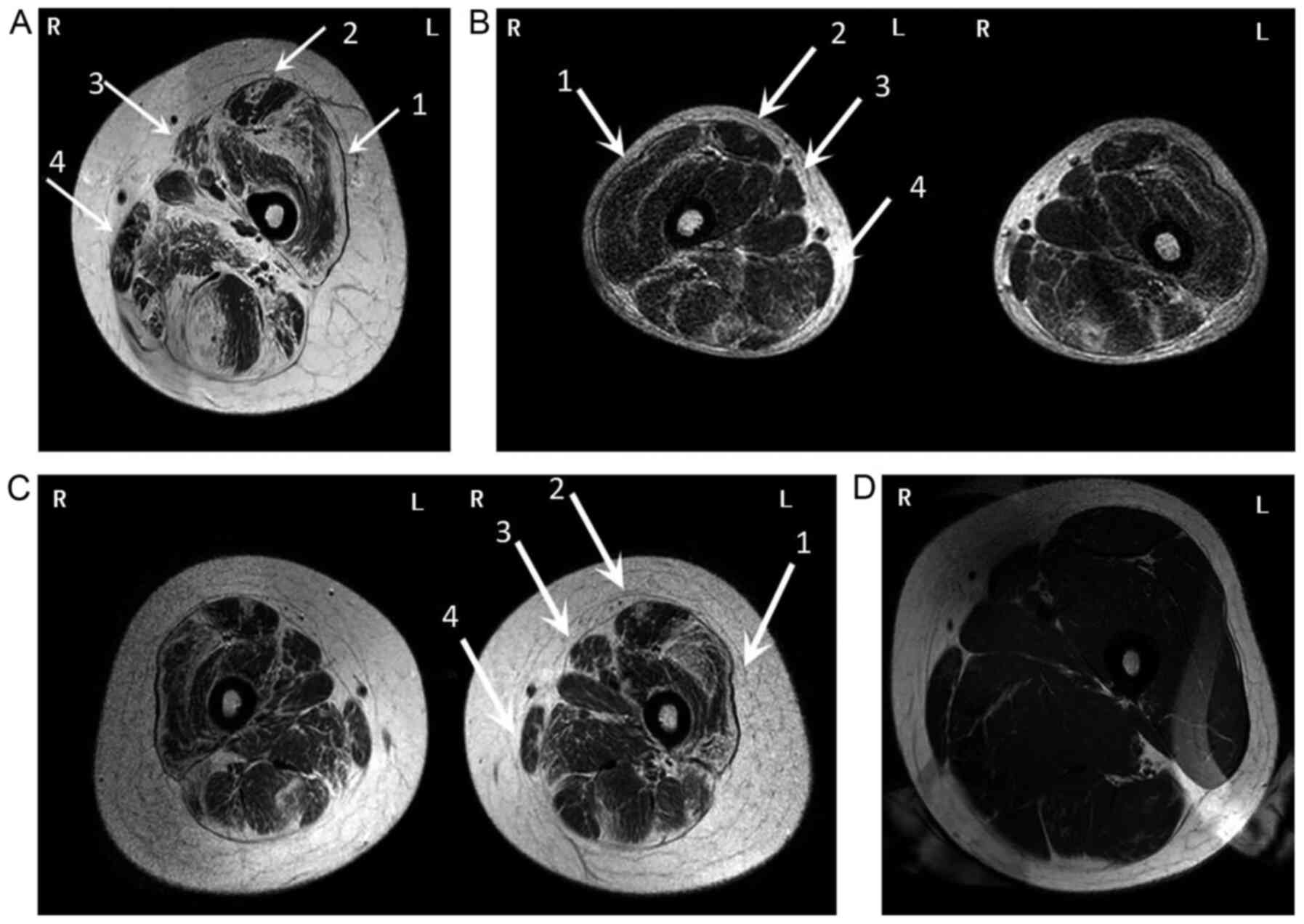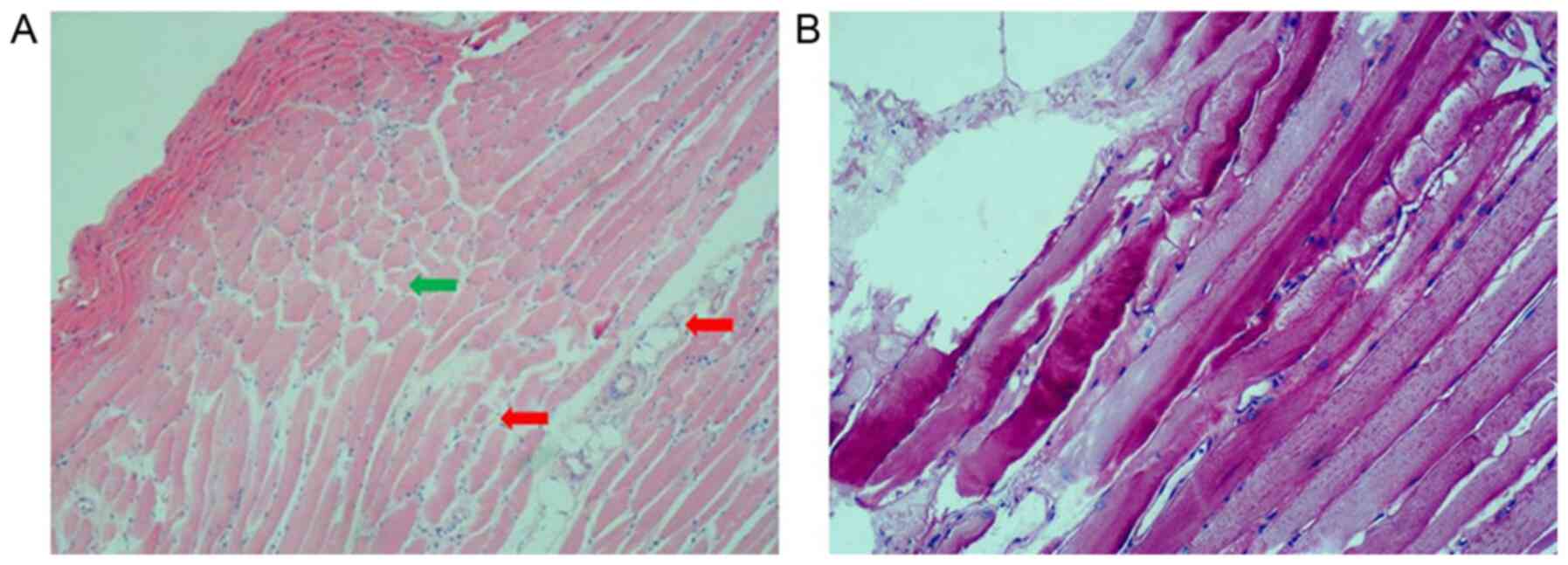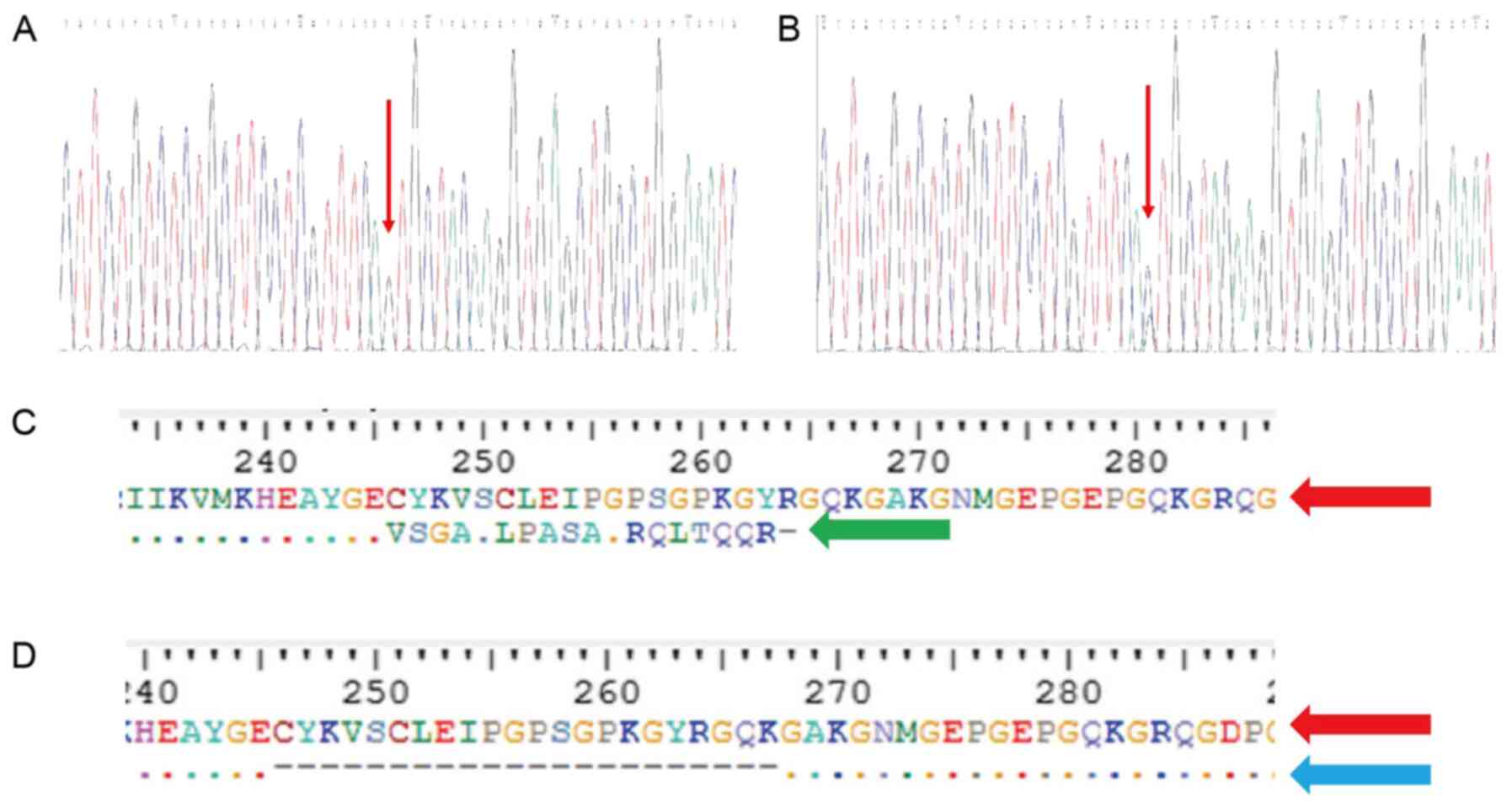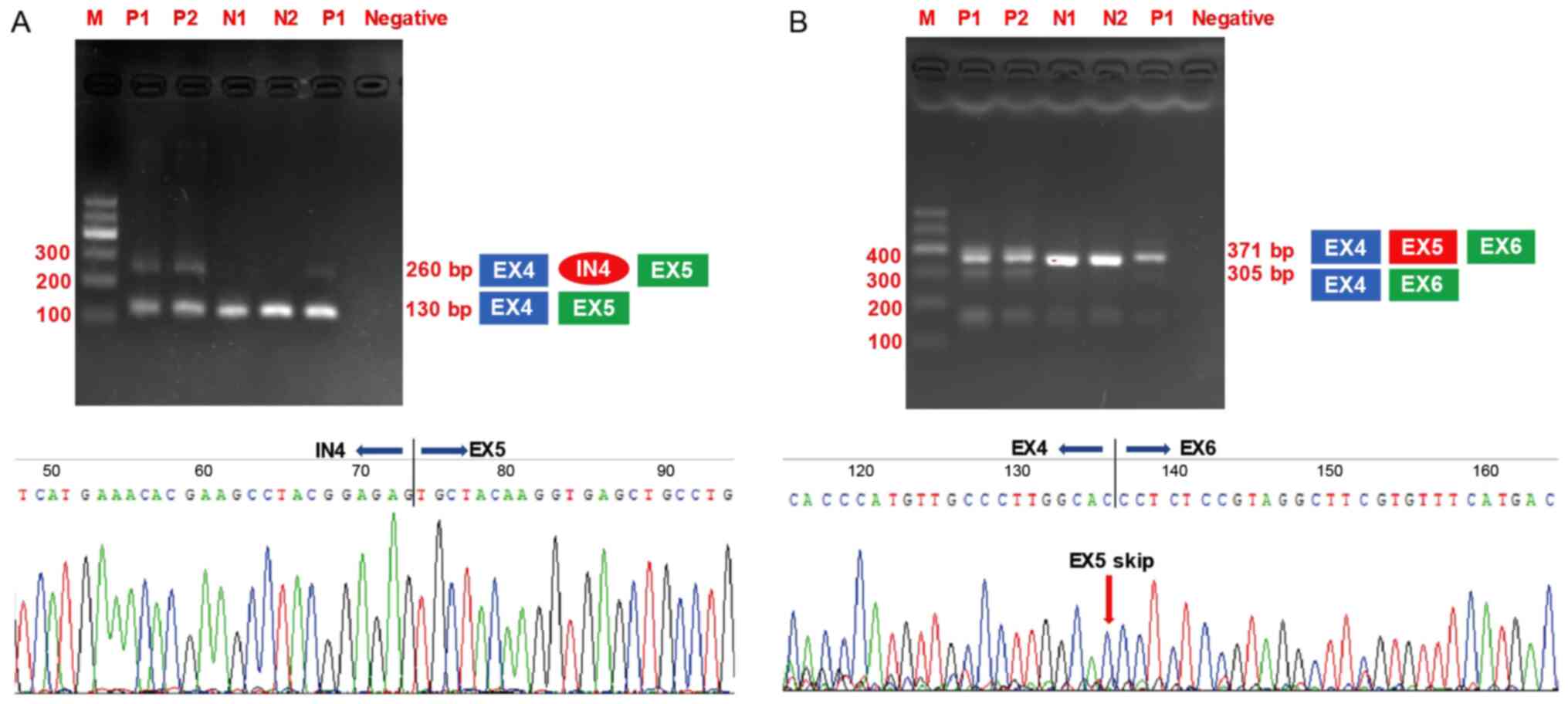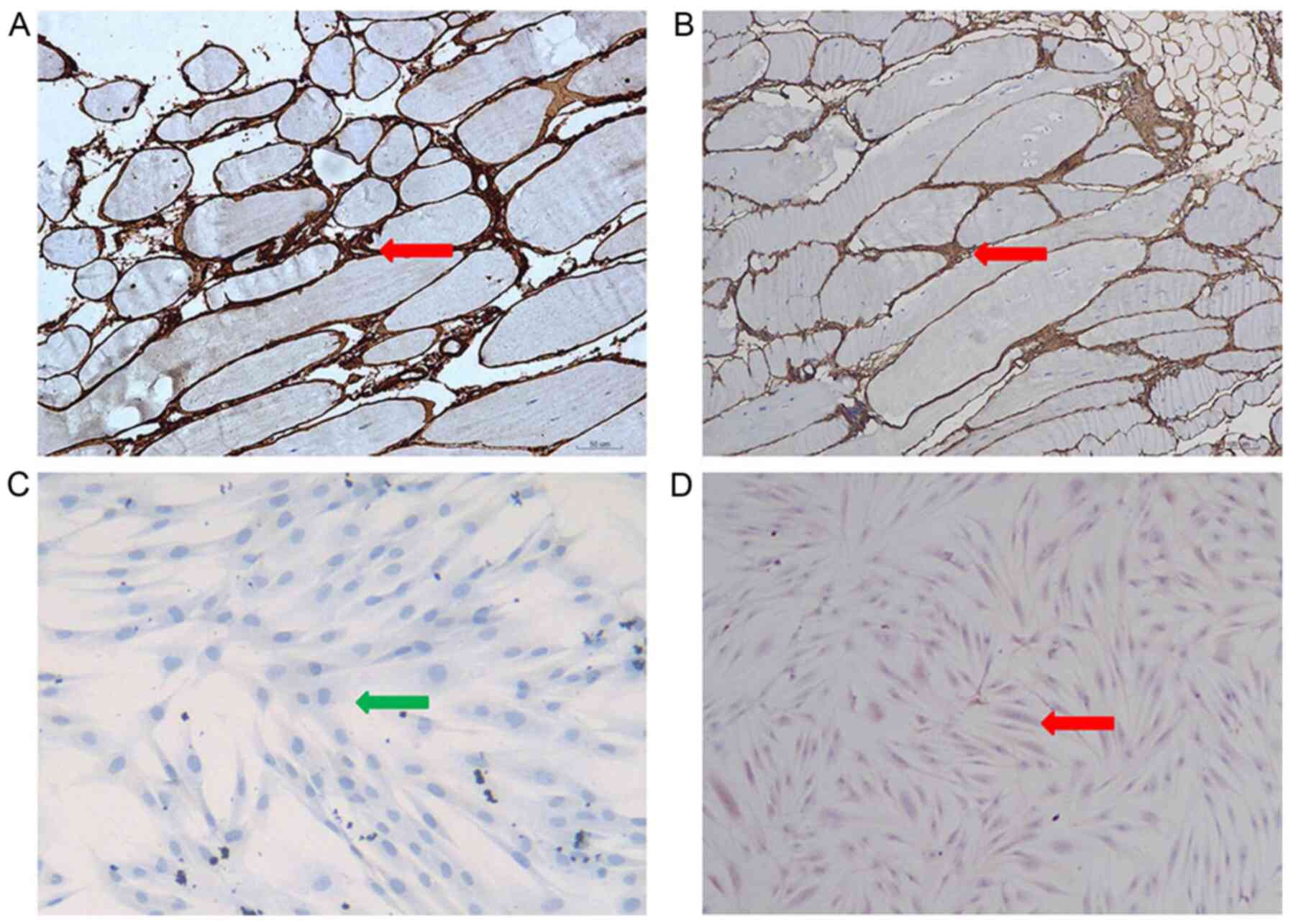|
1
|
Cescon M, Gattazzo F, Chen PW and Bonaldo
P: Collagen VI at a glance. J Cell Sci. 128:3525–3531. 2015.
View Article : Google Scholar : PubMed/NCBI
|
|
2
|
Bushby KMD, Collins J and Hicks D:
Collagen type VI myopathies. Adv Exp Med Biol. 802:185–199. 2014.
View Article : Google Scholar : PubMed/NCBI
|
|
3
|
Kim SY, Kim WJ, Kim H, Choi SA, Lee JS,
Cho A, Jang SS, Lim BC, Kim KJ, Kim JI, et al: Collagen VI-related
myopathy: Expanding the clinical and genetic spectrum. Muscle
Nerve. 58:381–388. 2018. View Article : Google Scholar : PubMed/NCBI
|
|
4
|
Foley AR, Hu Y, Zou Y, Columbus A,
Shoffner J, Dunn DM, Weiss RB and Bönnemann CG: Autosomal recessive
inheritance of classic Bethlem myopathy. Neuromuscular Disord.
19:813–817. 2009. View Article : Google Scholar
|
|
5
|
Gualandi F, Urciuolo A, Martoni E,
Sabatelli P, Squarzoni S, Bovolenta M, Messina S, Mercuri E,
Franchella A, Ferlini A, et al: Autosomal recessive Bethlem
myopathy. Neurology. 73:1883–1891. 2009. View Article : Google Scholar : PubMed/NCBI
|
|
6
|
Norwood FLM, Harling C, Chinnery PF, Eagle
M, Bushby K and Straub V: Prevalence of genetic muscle disease in
Northern England: In-depth analysis of a muscle clinic population.
Brain. 132:3175–3186. 2009. View Article : Google Scholar : PubMed/NCBI
|
|
7
|
Lee JH, Shin HY, Park HJ, Kim SH, Kim SM
and Choi YC: Clinical, pathologic, and genetic features of collagen
VI-related myopathy in Korea. J Clin Neurol. 13:331–339. 2017.
View Article : Google Scholar : PubMed/NCBI
|
|
8
|
Briñas L, Richard P, Quijano-Roy S,
Gartioux C, Ledeuil C, Lacène E, Makri S, Ferreiro A, Maugenre S,
Topaloglu H, et al: Early onset collagen VI myopathies: Genetic and
clinical correlations. Ann Neurol. 68:511–520. 2010. View Article : Google Scholar : PubMed/NCBI
|
|
9
|
Burset M, Seledtsov IA and Solovyev VV:
Analysis of canonical and non-canonical splice sites in mammalian
genomes. Nucleic Acids Res. 28:4364–4375. 2000. View Article : Google Scholar : PubMed/NCBI
|
|
10
|
Ohno K, Takeda J and Masuda A: Rules and
tools to predict the splicing effects of exonic and intronic
mutations. Wiley Interdiscip Rev RNA. 9:2018. View Article : Google Scholar
|
|
11
|
Demir K, Kattan WE, Zou M, Durmaz E,
BinEssa H, Nalbantoğlu Ö, Al-Rijjal RA, Meyer B, Özkan B and Shi Y:
Novel CYP27B1 gene mutations in patients with vitamin D-dependent
rickets type 1A. PLoS One. 10:e01313762015. View Article : Google Scholar : PubMed/NCBI
|
|
12
|
Ozsolak F and Milos PM: RNA sequencing:
Advances, challenges and opportunities. Nat Rev Genet. 12:87–98.
2011. View
Article : Google Scholar :
|
|
13
|
Chen R, Im H and Snyder M: Whole-exome
enrichment with the agilent sureselect human all exon platform.
Cold Spring Harb Protoc. 2015:626–633. 2015.PubMed/NCBI
|
|
14
|
Li H and Durbin R: Fast and accurate short
read alignment with Burrows-Wheeler transform. Bioinformatics.
25:1754–1760. 2009. View Article : Google Scholar : PubMed/NCBI
|
|
15
|
Martoni E, Urciuolo A, Sabatelli P, Fabris
M, Bovolenta M, Neri M, Grumati P, D'Amico A, Pane M, Mercuri E, et
al: Identification and characterization of novel collagen VI
non-canonical splicing mutations causing ullrich congenital
muscular dystrophy. Hum Mutat. 30:E662–E672. 2009. View Article : Google Scholar : PubMed/NCBI
|
|
16
|
Wang C, Yue F and Kuang S: Muscle
histology characterization using H&E staining and muscle fiber
type classification using immunofluorescence staining. Bio Protoc.
7:e22792017. View Article : Google Scholar :
|
|
17
|
Fu J, Zheng YM, Jin SQ, Yi JF, Liu XJ, Lyn
H, Wang ZX, Zhang W, Xiao JX and Yuan Y: 'Target' and 'Sandwich'
signs in thigh muscles have high diagnostic values for collagen
VI-related myopathies. Chin Med J (Engl). 129:1811–1816. 2016.
View Article : Google Scholar
|
|
18
|
Mercuri E, Lampe A, Allsop J, Knight R,
Pane M, Kinali M, Bonnemann C, Flanigan K, Lapini I, Bushby K, et
al: Muscle MRI in Ullrich congenital muscular dystrophy and Bethlem
myopathy. Neuromuscul Disord. 15:303–310. 2005. View Article : Google Scholar : PubMed/NCBI
|
|
19
|
Vanegas OC, Zhang RZ, Sabatelli P,
Lattanzi G, Bencivenga P, Giusti B, Columbaro M, Chu ML, Merlini L
and Pepe G: Novel COL6A1 splicing mutation in a family affected by
mild Bethlem myopathy. Muscle Nerve. 25:513–519. 2002. View Article : Google Scholar : PubMed/NCBI
|
|
20
|
Lucarini L, Giusti B, Zhang RZ, Pan TC,
Jimenez-Mallebrera C, Mercuri E, Muntoni F, Pepe G and Chu ML: A
homozygous COL6A2 intron mutation causes in-frame triple-helical
deletion and nonsense-mediated mRNA decay in a patient with Ullrich
congenital muscular dystrophy. Hum Genet. 117:460–466. 2005.
View Article : Google Scholar : PubMed/NCBI
|
|
21
|
Zhang RZ, Sabatelli P, Pan TC, Squarzoni
S, Mattioli E, Bertini E, Pepe G and Chu ML: Effects on collagen VI
mRNA stability and microfibrillar assembly of three COL6A2
mutations in two families with Ullrich congenital muscular
dystrophy. J Biol Chem. 277:43557–43564. 2002. View Article : Google Scholar : PubMed/NCBI
|
|
22
|
Jimenez-Mallebrera C, Maioli MA, Kim J,
Brown SC, Feng L, Lampe AK, Bushby K, Hicks D, Flanigan KM,
Bonnemann C, et al: A comparative analysis of collagen VI
production in muscle, skin and fibroblasts from 14 Ullrich
congenital muscular dystrophy patients with dominant and recessive
COL6A mutations. Neuromuscul Disord. 16:571–582. 2006. View Article : Google Scholar : PubMed/NCBI
|
|
23
|
Norwood F, de Visser M, Eymard B,
Lochmüller H and Bushby K; EFNS Guideline Task Force: EFNS
guideline on diagnosis and management of limb girdle muscular
dystrophies. Eur J Neurol. 14:1305–1312. 2007. View Article : Google Scholar : PubMed/NCBI
|
|
24
|
Lampe AK and Bushby KMD: Collagen VI
related muscle disorders. J Med Genet. 42:673–685. 2005. View Article : Google Scholar : PubMed/NCBI
|
|
25
|
Zhang YZ, Zhao DH, Yang HP, Liu AJ, Chang
XZ, Hong DJ, Bonnemann C, Yuan Y, Wu XR and Xiong H: Novel collagen
VI mutations identified in Chinese patients with Ullrich congenital
muscular dystrophy. World J Pediatr. 10:126–132. 2014. View Article : Google Scholar : PubMed/NCBI
|
|
26
|
Yang HP, Zhang YZ, Ding J, Jiao H, Lü JL
and Xiong H: Clinical and mutation analyses of a Chinese family
with Bethlem myopathy. Zhonghua Yi Xue Za Zhi. 92:2820–2824.
2012.In Chinese.
|
|
27
|
Vaz-Drago R, Custódio N and Carmo-Fonseca
M: Deep intronic mutations and human disease. Hum Genet.
136:1093–1111. 2017. View Article : Google Scholar : PubMed/NCBI
|
|
28
|
Tang R, Prosser DO and Love DR: Evaluation
of bioinformatic programmes for the analysis of variants within
splice site consensus regions. Adv Bioinformatics.
2016:56140582016. View Article : Google Scholar : PubMed/NCBI
|
|
29
|
BinEssa HA, Zou M, Al-Enezi AF, Alomrani
B, Al-Faham MSA, Al-Rijjal RA, Meyer BF and Shi Y: Functional
analysis of 22 splice-site mutations in the PHEX, the causative
gene in X-linked dominant hypophosphatemic rickets. Bone.
125:186–193. 2019. View Article : Google Scholar : PubMed/NCBI
|
|
30
|
Steffensen AY, Dandanell M, Jønson L,
Ejlertsen B, Gerdes AM, Nielsen FC and Hansen TV: Functional
characterization of BRCA1 gene variants by mini-gene splicing
assay. Eur J Hum Genet. 22:1362–1368. 2014. View Article : Google Scholar : PubMed/NCBI
|
|
31
|
Wang Y, Sun Y, Liu M, Zhang X and Jiang T:
Functional characterization of argininosuccinate lyase gene
variants by mini-gene splicing assay. Front Genet. 10:4362019.
View Article : Google Scholar : PubMed/NCBI
|
|
32
|
Zaum AK, Stüve B, Gehrig A, Kölbel H,
Schara U, Kress W and Rost S: Deep intronic variants introduce DMD
pseudoexon in patient with muscular dystrophy. Neuromuscul Disord.
27:631–634. 2017. View Article : Google Scholar : PubMed/NCBI
|
|
33
|
Lou DI, Hussmann JA, Mcbee RM, Acevedo A,
Andino R, Press WH and Sawyer SL: High-throughput DNA sequencing
errors are reduced by orders of magnitude using circle sequencing.
Proc Natl Acad Sci USA. 110:19872–19877. 2013. View Article : Google Scholar : PubMed/NCBI
|
|
34
|
Lee H, Huang AY, Wang LK, Yoon AJ,
Renteria G, Eskin A, Signer RH, Dorrani N, Nieves-Rodriguez S, Wan
J, et al: Diagnostic utility of transcriptome sequencing for rare
Mendelian diseases. Genet Med. 22:490–499. 2020. View Article : Google Scholar :
|
|
35
|
Alieva M, van Rheenen J and Broekman MLD:
Potential impact of invasive surgical procedures on primary tumor
growth and metastasis. Clin Exp Metastas. 35:319–331. 2018.
View Article : Google Scholar
|
|
36
|
Barker SE, Grosse SM, Siapati EK, Kritz A,
Kinnon C, Thrasher AJ and Hart SL: Immunotherapy for neuroblastoma
using syngeneic fibroblasts transfected with IL-2 and IL-12. Brit J
Cancer. 97:210–217. 2007. View Article : Google Scholar : PubMed/NCBI
|















